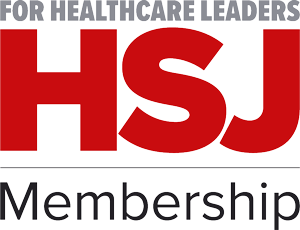HSJ hosts the Patient Safety Watch newsletter, written by Patient Safety Watch chair Jeremy Hunt
Good afternoon and welcome to the latest edition of the Patient Safety Watch newsletter, brought to you this time by Jeremy.
League tables return
It’s a big week for those interested in patient safety policy and history. The government has published new NHS performance league tables, ranking every hospital trust in England from best to worst. Ring a bell? In the noughties, we had star ratings, again put in place to pressurise hospitals to meet government objectives. In a way, they worked – waiting times went down – but we also ended up with Mid Staffs and a host of other scandals as trusts “hit the target and missed the point”.
As NHS Providers has warned, trusts may focus only on the measures that immediately boost their ranking, regardless of whether they’re the right priorities for patient care.
The King’s Fund also cautioned against oversimplifying hospital performance. To which I would add two further risks. Firstly, the risk of confusion: should a trust focus on its league table position or getting a good Care Quality Commission rating (the latter, of course, does give a lot of weight to patient safety). And secondly, it leads to further top-down micromanagement in the NHS as hospital chief executives spend more time “managing up” than focusing on the patients in their care.
Martha’s Rule now live in every acute hospital
More positively, NHS England has confirmed Martha’s Rule is now fully rolled out across all acute hospitals in England. The scheme allows patients, families, carers and staff to trigger a rapid independent review if they believe deterioration is being missed or concerns are being ignored. It was established following the tragic death of 13-year-old Martha Mills in 2021, whose parents’ concerns about her deteriorating condition were reportedly dismissed.
As reported by Sky News, between September 2024 and June 2025, 4,906 calls were made to Martha’s Rule helplines to escalate concerns about care, 720 of which led to changes, such as new medicines and antibiotics. Nearly three-quarters (72 per cent) of the calls were from families. Martha’s inspirational mother Merope has now called for the extension of the initiative into maternal care. Great idea!
New report shows ongoing inequalities in maternal deaths
Sobering news in the new MBRRACE-UK Saving Lives, Improving Mothers’ Care report, which found 257 women died during or shortly after pregnancy in 2021-23, a rate of 12.8 per 100,000 women giving birth. The main causes were blood clots, heart disease, and covid-19. However, for later maternal deaths, the leading cause was suicide, and mental health accounted for more than a third of deaths.
The report also highlights stark inequalities. Women aged 35 or older were significantly more likely to die than those in their late twenties. Black women faced more than double the risk of white women, and women in deprived areas were almost twice as likely to die as those in the least deprived.
Thousands retested after faulty diabetes machine is discovered
As reported by the BBC, safety concerns have emerged following the discovery that faulty blood glucose testing equipment has led to incorrect type 2 diabetes diagnoses across NHS labs in England. The machines, manufactured by Trinity Biotech, were found to produce erroneous readings.
At least 55,000 patients will now need further blood tests, with 11,000 patients at Luton and Dunstable Hospital alone affected. The issue, first identified in April 2024, was not fully confirmed until recently.
In a statement to the broadcaster, Trinity Biotech said it was working closely with the Medicines and Healthcare products Regulatory Agency and had issued safety notices to those who used the machines.
Concerning discrepancies in avoidable deaths among people with learning disabilities
The annual Learning Disabilities Mortality Review (LeDeR) – covering deaths from January 2021 to December 2023 – has finally been published. It took too long, but it is a fascinating read now that we have it. As reported by HSJ, the report found that more than half of the deaths among Black, African, Caribbean, or Black British adults with learning disabilities were from preventable causes, higher than the overall 43 per cent average.
Despite a decline in avoidable deaths since 2021, people with learning disabilities continue to face nearly double the death rate of the general population. Key causes include flu, digestive cancers, and heart disease, with almost 40 per cent experiencing delays in care.
‘Missed opportunities’ led to nine baby deaths at trust
As reported by HSJ, an external review has revealed that nine out of 44 baby deaths at Gloucestershire Hospitals Foundation Trust between 2020 and 2023 may have been preventable due to “missed opportunities” in care that “could have potentially changed the outcome”. Key issues included incomplete risk assessments, delayed escalation, and “misinterpreting” foetal heartbeat monitoring during labour.
Study looking for people who have been involved in a Patient Safety Incident Investigation
The Response Study aims to understand how the rollout and implementation of the Patient Safety Incident Response Framework (PSIRF) is happening across the English NHS. The team is inviting patients, families and carers who have been involved in a Patient Safety Incident Investigation since January 2024 to take part in a short online survey. The survey takes approximately 10 minutes, and is voluntary and anonymous. The survey closes on Friday 31 October. More information is available here.
A few more positive shares for the edition…
The Retrievals: A must-listen podcast for maternity safety
The second season of The Retrievals, released by The New York Times and Serial Productions, takes a solutions-focused approach to the issue of intraoperative pain during caesarean births – more common than most people realise.
Women’s experiences of pain have often been minimised or dismissed. As recently as 2012, the Royal College of Anaesthetists set a best practice target, allowing up to 20 per cent of women undergoing emergency c-sections to experience pain.
The podcast is well worth a listen for anyone working in patient safety, especially in maternity. Susanna Stanford, in particular, has been instrumental in driving change on safety, best practice, and women’s rights. Listen via Apple Podcasts, Spotify or NYTimes.
Secure your spot at the HSJ Patient Safety Congress
The HSJ Patient Safety Congress returns next week (15-16 September, Manchester Central). Don’t miss your chance to join 1,000+ healthcare leaders and hear from 150+ expert speakers, including Penny Dash, Bill Kirkup, Sir Julian Hartley, and me. Shaun Lintern will be putting me through my paces – something which I am not 100 per cent sure I am looking forward to…
You can book your tickets here. Patient Safety Watch subscribers get 5 per cent off – use code 5PSWATCH at checkout for each standard rate ticket.
That’s all for this edition. Thanks for reading, and please look out for the next newsletter from James in a fortnight.
Jeremy



























No comments yet